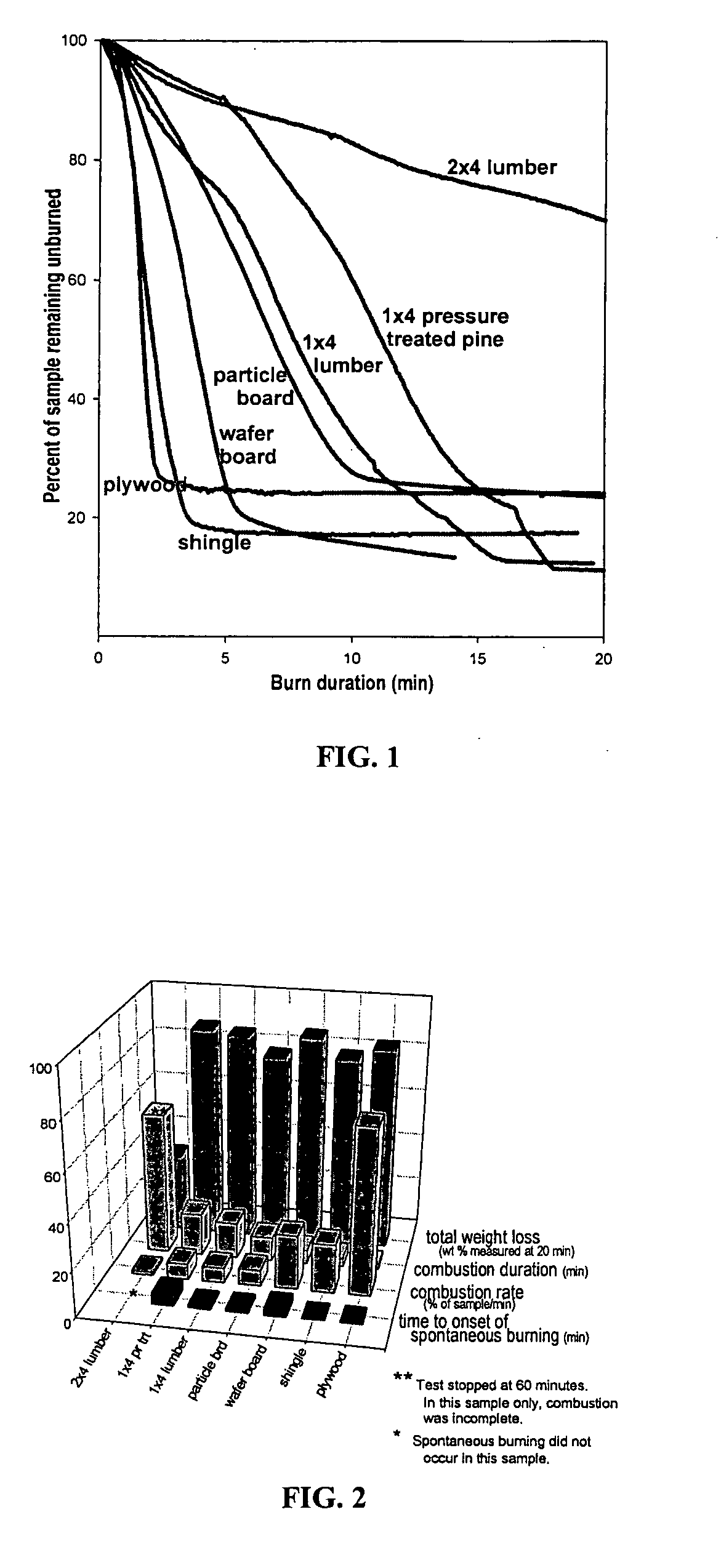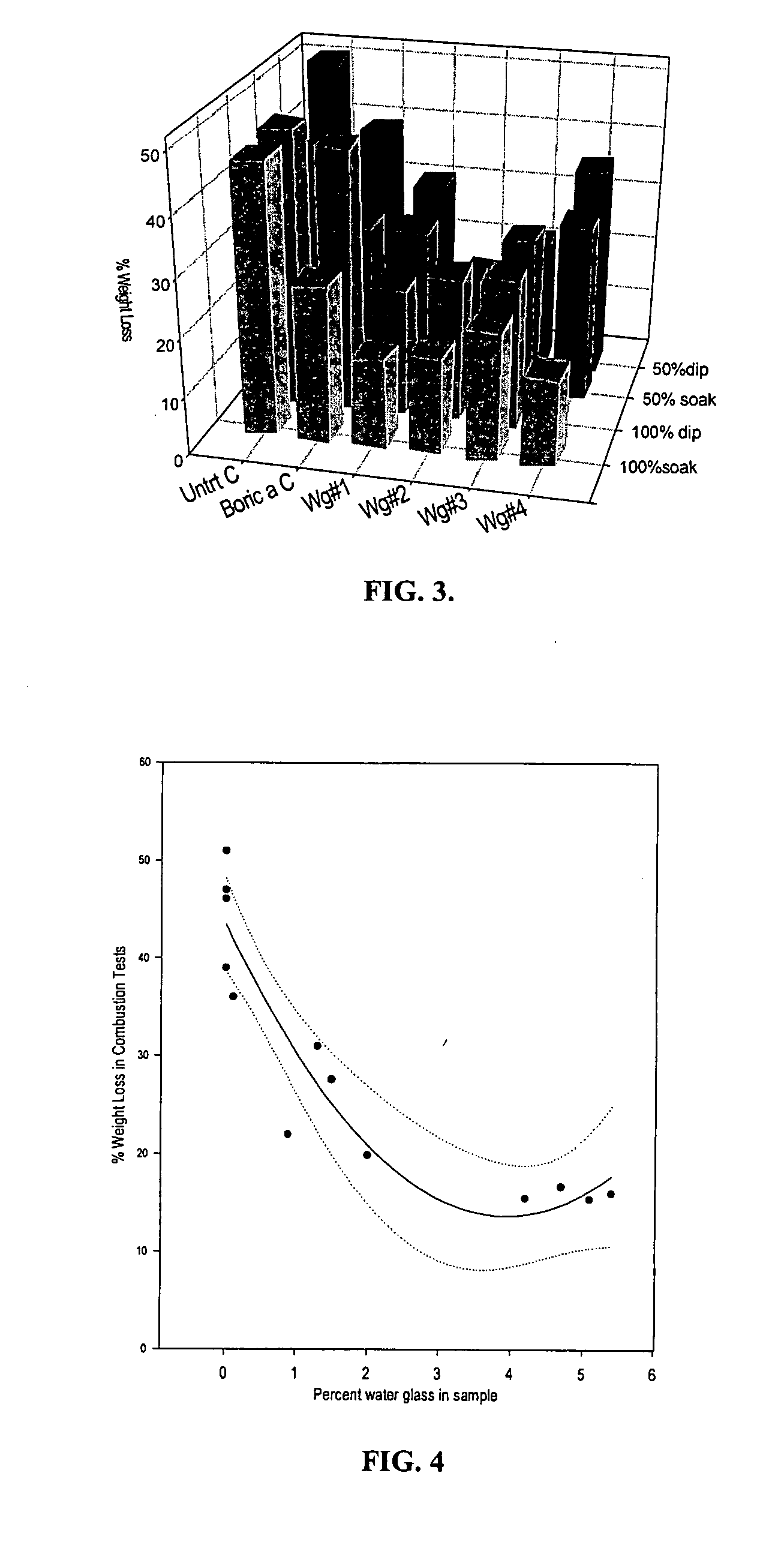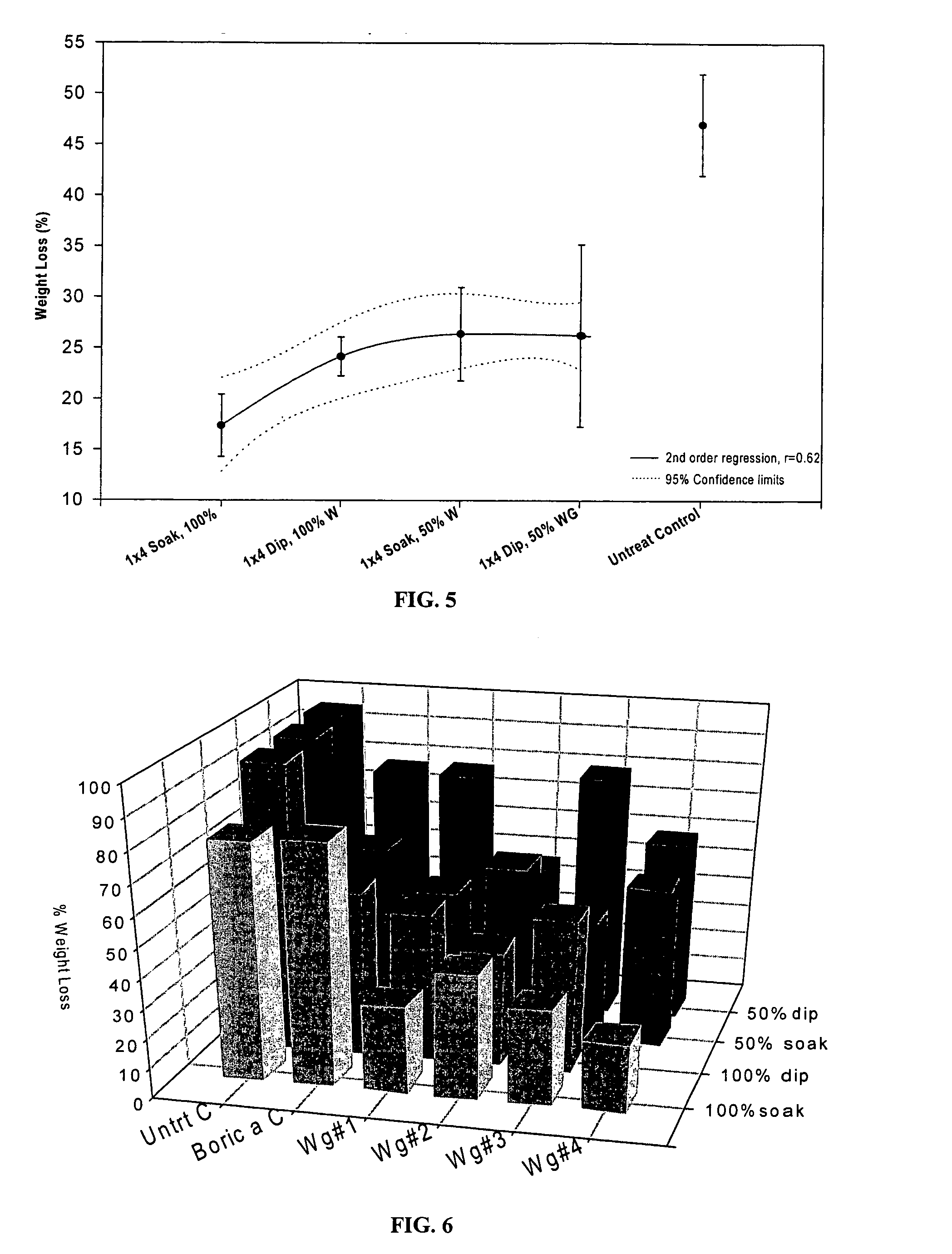Process of using sodium silicate to create fire retardant products
a technology of sodium silicate and fire retardant products, which is applied in the direction of textiles and papermaking, solid waste management, woodworking apparatus, etc., can solve the problems of house fires that have been a major threat to the well-being of many families, electrical fires in the garage that have spread, and become a raging inferno, so as to achieve the effect of reducing the risk of fir
- Summary
- Abstract
- Description
- Claims
- Application Information
AI Technical Summary
Benefits of technology
Problems solved by technology
Method used
Image
Examples
example 1
[0104]FIGS. 3-5 present the results of propane flame tests of sodium silicate treated 1×4 pine samples.
[0105] There is a large difference between the untreated control and the test samples. With the untreated controls there ranges from about a 40-38% wt. loss to 50% wt. loss, and with the treated samples, it ranges from about 15% wt. loss to a 25% wt. loss. As FIG. 3 shows, the boric acid test samples have a much greater average % weight loss than the treated samples. This three dimensional set of bar graphs shows how great the difference is with each bar graph colorized and labeled.
[0106] Propane Flame Test for 1×4 Pine Wood Sample Subjected to a Seven-Day Soak in 100% Sodium Silicate:
[0107] Burn initiation (T0): The propane flame from the nozzle contacted the wood in an area extending 7 cm laterally and reaching up approximately 27.5 cm. In the first few seconds the flame color was light blue, and relatively difficult to see. In the impact area, the...
example 2
1×4 Pressure Treated Pine—Propane Flame Tests
[0125]FIGS. 6-7 present the results of propane flame tests of sodium silicate treated 1×4 pressure treated pine samples.
[0126]FIG. 6 shows how great the 5 wt. loss was, of the untreated control and the boric acid control, and the water glass treated samples. The data shows that in all cases, the water glass samples performed better than the boric acid control and better than the untreated control.
[0127] Propane Test for 1×4 Pressure Treated Pine Wood Sample Subjected to a 1-Day Dip in 100% Sodium Silicate:
[0128] Burn initiation (T0): The flame from the propane tank began to reflect off the wood sample. The color of the fire was bright orange. The flame reflection extended 13 cm up from the base of the wood. The flame also began to burn up the right side slightly.
[0129] Burn Period (T1-20): The flames continue to reflect off the sodium silicate, only reaching 15 cm high. The flames reach the small left side, where it is mostly unprote...
example 3
2×4 Pine—Propane and Candle Flame Tests
[0144] Propane Flame Test for 2×4 Spruce Sample Subjected to a 24-Hour Dip in 100% Sodium Silicate:
[0145] Burn initiation (T0): The flame from the propane tank began to make an area of the wood glow. The area that was glowing was 1 inch in diameter. The sample made sizzling and popping noises, and around the burn area, white foam bubbled out of the sodium silicate.
[0146] Burn period (T1-20): The flame from the propane tank spread about 3 cm around the initial burn site. No wood propagation occurred in this wood sample. Around and above the burn site, char expanded causing mare sodium silicate to bubble up along the outside of the char area. No flame burned by itself on the wood. Any time that a flame would begin to grow it size, it would die down. Instead of burning, the area around the initial contact point, the area reddened, and glowed in the heat.
[0147] Post burn period (T20-35): After the propane flame was removed from the test sample,...
PUM
| Property | Measurement | Unit |
|---|---|---|
| Temperature | aaaaa | aaaaa |
| Temperature | aaaaa | aaaaa |
| Temperature | aaaaa | aaaaa |
Abstract
Description
Claims
Application Information
 Login to View More
Login to View More - R&D
- Intellectual Property
- Life Sciences
- Materials
- Tech Scout
- Unparalleled Data Quality
- Higher Quality Content
- 60% Fewer Hallucinations
Browse by: Latest US Patents, China's latest patents, Technical Efficacy Thesaurus, Application Domain, Technology Topic, Popular Technical Reports.
© 2025 PatSnap. All rights reserved.Legal|Privacy policy|Modern Slavery Act Transparency Statement|Sitemap|About US| Contact US: help@patsnap.com



